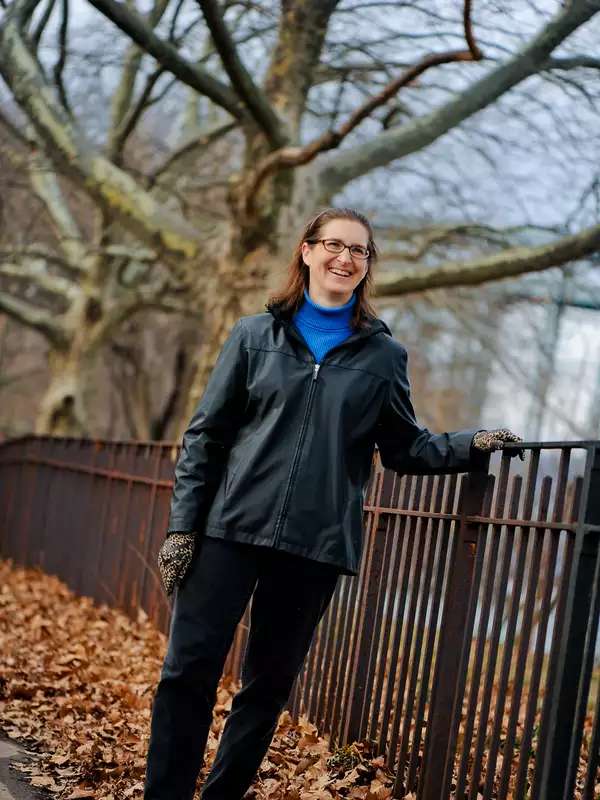
Hilary Callahan
Department
Biology, Environmental Science
Office
Contact
Hilary Callahan's integrative research examines many different features of plants — from roots to flowers to seeds. She seeks to understand how plants and their traits function in nature, and how external factors affect trait expression and how rapidly traits evolve. To link plant traits with plant genes, she frequently works with the genomic model Arabidopsis thaliana — the "fruit fly of botany." Her interest in how multiple traits are integrated usesArabidopsis as well as longer-lived shrubs and trees growing in Barnard's greenhouse, at nearby botanical gardens, and at several experimental forests in the northeastern region. She has a strong interest in how the timing of plant life cycles will respond to anthropogenic global change. She receives funding from the National Science Foundation, and has participated for more than a decade in teaching students about plant genomics research through The UNPAK Project (undergraduates phenotyping Arabidopsis knockouts). She teaches lecture and lab courses in Ecology, Plant Evolution and Diversity and has also taught Applied Ecology and Evolution and seminars for seniors and first-years. In collaboration with horticulturalist Nicholas Gershberg, she oversees the living collections of the Arthur Ross Greenhouse on the roof of Milbank Hall. She serves as President to the Board of Directors of Black Rock Forest, an organization promoting research, education and conservation and is also an affiliated faculty member of Columbia's Department of Ecology, Evolution and Environmental Biology.
- B.A., Yale University
- Ph.D., University of Wisconsin-Madison
- Plant phenotypes from the perspectives of ecological genetics and evolutionary genomics
- Plant diversity, including its societal relevance
- BIOL BC2240 Plant Evolution & Diversity
- BIOL BC2242 Ecology
- BIOL BC2841 Laboratory in Plant Evolution & Diversity
- BIOL BC3380 Applied Ecology & Applied Evolution
- BIOL BC3597 Guided Research
"Seasonal patterns of native plant cover and leaf trait variation on New York City green roofs" (with Eric Yee, CU MA '16 and colleagues) Urban Ecosystems 104: 1-12 (2021)
"Disrupting the disruptors: the consequences of mutations in mobile elements for ecologically important life history traits." (with J Pickel BC'19, J Tan BC'19 and colleagues) Evolutionary Ecology 34:363-377 (2020)
"Evolution of leaf structure and drought tolerance in species of California Ceanothus" (with Dr. L Fletcher '15 and colleagues) American Journal of Botany 105:1672-1687 (2019)
"Evolutionary change in continuous reaction norms" (with C.J. Murren and a large working group), The American Naturalist.183:453-467 (2014)
"Evolutionary patterns and biogeochemical significance of angiosperm root traits" (with L.H. Comas and colleagues) International Journal of Plant Sciences 173:584-595 (2012)
"Impacts of elevated nitrogran inputs on oak reproductive and seed ecology" (with Dr. K. del Fierro '07, Dr A.E. Patterson, Dr H. Zafar '06), Global Change Biology 14 (2008)
"Shade-induced plasticity and its ecological significance in wild populations of Arabidopsis thaliana" (with M. Pigliucci), Ecology 83 (2002)
"Developmental phenotypic plasticity: Where ecology and evolution meet molecular biology" (with M. Pigliucci, and C. D. Schlichting), Bioessays 19 (1997)
In The News
Delicate leaves and flowers from the Barnard Archives are being scanned and digitally preserved for future scholars
For the second time in two years, the giant inflorescence is putting on a show at the College’s Arthur Ross Greenhouse.
Today we sat down with Summer Research Institute (SRI) participant and research assistant, Tiffany Vo, to talk about research and why representation in STEM is so important.
In Callahan’s “Healthier Lives” biology course, students will tackle academic work at the intersection of COVID-19, Black Lives Matter, and the climate crisis.
After a seven-year campus residency, the famously smelly plant — standing more than 5 feet tall — is finally opening up.